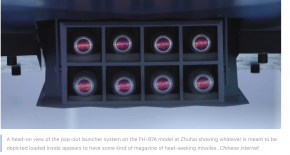Article today from APDR regarding the planned 24 x C-130J-30 procurement:
The US State Department has approved the sale of 24 Lockheed Martin C-130J-30 Hercules medium air mobility transport aircraft to Australia.

asiapacificdefencereporter.com
Some interesting points made in the article.
* The first 12 are reportedly scheduled to be delivered in the 2027-28 timeframe.
* The potential procurement of 6 x KC-130J appears to have been shelved.
* The article also suggests that the C-27J fleet may end up being retained in service too.
Another interesting thing is the cost of the aircraft, ‘simple maths’, eg, project cost, divided by number of aircraft, works out at approx A$400m per aircraft, which appears to be a $hit load of money (but as we know project cost divided by number of aircraft is not as simple as often appears on the surface).
(One more point, the article was written by Andrew McLaughlin, formerly of ADBR and AA, I’ve found Andrew to be usually pretty accurate in his reporting, far more than many other Defence writers too).




